Feature
Treasure Hunter
Bob Wittman ’80 is one of the world's foremost experts in art theft recovery.
Bob Wittman was staying at the InterContinental hotel near Miami, eagerly awaiting word of what was happening outside of the Louve. Four thousand five hundred miles away in Paris, his associates weren’t standing in the interminable line to get in, hoping to eventually elbow their way through hordes of tourists to catch a glimpse of the Mona Lisa. As the line slowly snaked its way toward the entrance, they remained in the plaza.
When the men they were waiting for arrived, one carried with him a tube. Inside it were two original Pablo Picassos worth an estimated $65 million. They had been stolen from the artist’s granddaughter Diana about five months earlier, and Wittman had orchestrated this operation to get them back.
The $10 million black market deal had been set up by an informant and someone Wittman describes simply as a “bad guy” in Florida who were under the distinctly mistaken impression that he was a crooked art dealer. After Wittman’s colleagues took possession of the two paintings, “Maya With Doll” from 1938 and “Portrait of Jacqueline” from 1961, the thieves were arrested and the paintings returned to their rightful owner.
The real art in an art heist isn’t the stealing, it’s the selling ... The thieves are good at getting the stuff, but then the problem is, what are you going to do with it? They’re usually better criminals than businessmen.
Bob Wittman
While the 2007 undercover operation might sound like a scene from a movie, it was just one of many such stings organized by Wittman ’80, the founder of the FBI’s art crime team. During his two decades with the bureau, Wittman was responsible for recovering roughly $300 million in stolen art and cultural property. He left the FBI in 2008 with a reputation for being among the world’s foremost experts in art theft recovery—and no shortage of great stories.
“The real art in an art heist isn’t the stealing, it’s the selling,” says Wittman, 68. “The thieves are good at getting the stuff, but then the problem is, what are you going to do with it? They’re usually better criminals than businessmen.”
Two years after retiring from the FBI he wrote the memoir “Priceless: How I Went Undercover to Rescue the World’s Stolen Treasures.” It became a New York Times best-seller, and since has been optioned by Amazon. As anyone who’s ever met the unflappable Wittman knows, if it ever does become a television show it won’t lack for riveting plotlines.
“He’s cool as a cucumber during stressful times,” says Herb Lottier, the former director of protection services at the Philadelphia Museum of Art. “The man could be an actor on Broadway. He's got ice water running through his veins.”
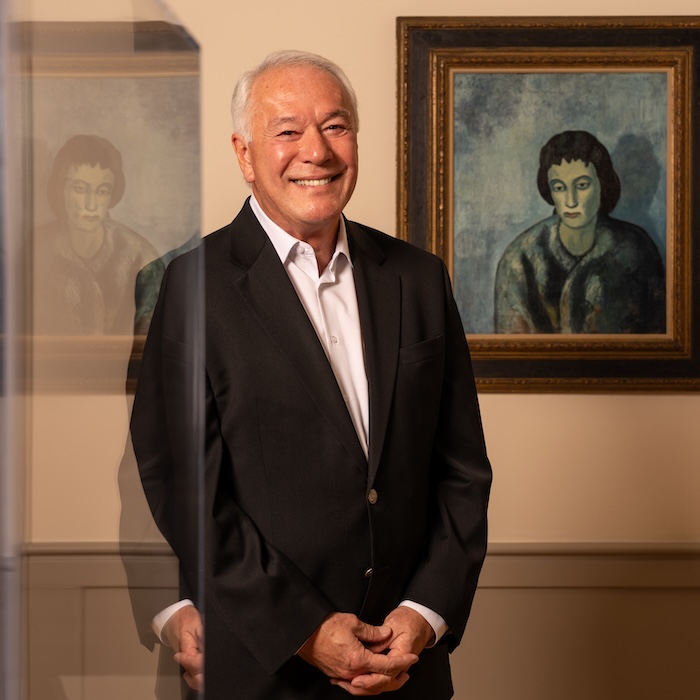
Wittman didn’t set out to travel the world solving art crimes like some sort of modern-day Sherlock Holmes with a Baltimore accent, not a British one. He grew up in Hamilton a bigger fan of the Orioles and Colts than O’Keeffe or Cezanne. But his father, Robert, owned an antiques gallery on Howard Street downtown, where he sold Japanese ceramics and other Asian art. The young Wittman appreciated art even if he wasn’t transfixed by it. His mother, Yachiyo, was Japanese, and Wittman still recalls the bigotry she was subjected to during his childhood in the early 1960s.
The idea of working to eliminate prejudice intrigued him, even at an early age.
He majored in political science at TU, where he attended classes at night while working office jobs during the day. After graduating, he joined his father and brother in a publishing business that produced small newspapers focused primarily on agriculture. It was fulfilling work, but in the back of his mind he yearned for more excitement. In the early ‘80s he’d watch cop shows like “Hill Street Blues” and imagine himself as an officer fighting crime.
“I wanted to be Crockett,” he says of the Don Johnson character in “Miami Vice.” “I thought that would be really cool to be on a cigarette boat in Miami Harbor wearing a white suit. I thought, ‘I could do that in the FBI.’”
After seeing an advertisement for the agency in the employment section of the Catonsville Times, he applied. “Basically, you had to be at least 23 years old, have a college degree and not have any convictions,” he says. Needless to say, those were different times.
He was invited to take the entrance exam, and after passing that, a physical aptitude test and background check, was sent to Quantico, Virginia for training. Each recruit could list up to 15 cities where they wanted to be stationed; his top three were Honolulu, Miami and Baltimore. So of course, he was sent to the Philadelphia office.
Wittman was 32 and married with two children, but his wife, Donna, supported his dream. They packed up their family and headed north on I-95.
His first assignment was on the truck hijacking squad. While he was working cases involving stolen TVs and cigarettes, two high-profile art heists went down in Philly. A bronze sculpture mask was stolen from the Rodin Museum, and three important pieces from the University of Pennsylvania Museum of Archeology and Anthropology (now known as the Penn Museum) vanished. Art theft wasn’t a particularly sought-after assignment for the established agents in the office back then, so the cases landed on the new guy’s desk.
Wittman helped solve them both.
He’s cool as a cucumber during stressful times ... The man could be an actor on Broadway. He's got ice water running through his veins.
Herb Lottier, former director of protection services at the Philadelphia Museum of Art
A tip led to the apprehension of the man who stole the mask, which was crafted by Auguste Rodin in Paris in the 1860s before he was famous. When they arrested him, agents found the gun he used in the robbery, but not the mask.
“We ended up going to where he was living and digging out the entire garden, but we couldn't find it,” he says. “Finally, we went to his mother's house, and we searched that place from top to bottom. We eventually found it wrapped up in brown butcher paper and newspapers underneath the hot water heater in the basement.”
The other case was trickier.
One day during her lunch break, a woman who worked at the Penn Museum strolled into a secondhand shop near campus. There she saw the four-foot statue of the Egyptian god Osiris that had disappeared from the museum two years earlier. The roughly 5,000-year-old piece, worth hundreds of thousands of dollars, had a price tag of $200. When Wittman interviewed the owner of the store, he said that he bought it for $100 from a guy who bought it for $20 from a guy who found it in his mudroom when he moved into his house on South Street.
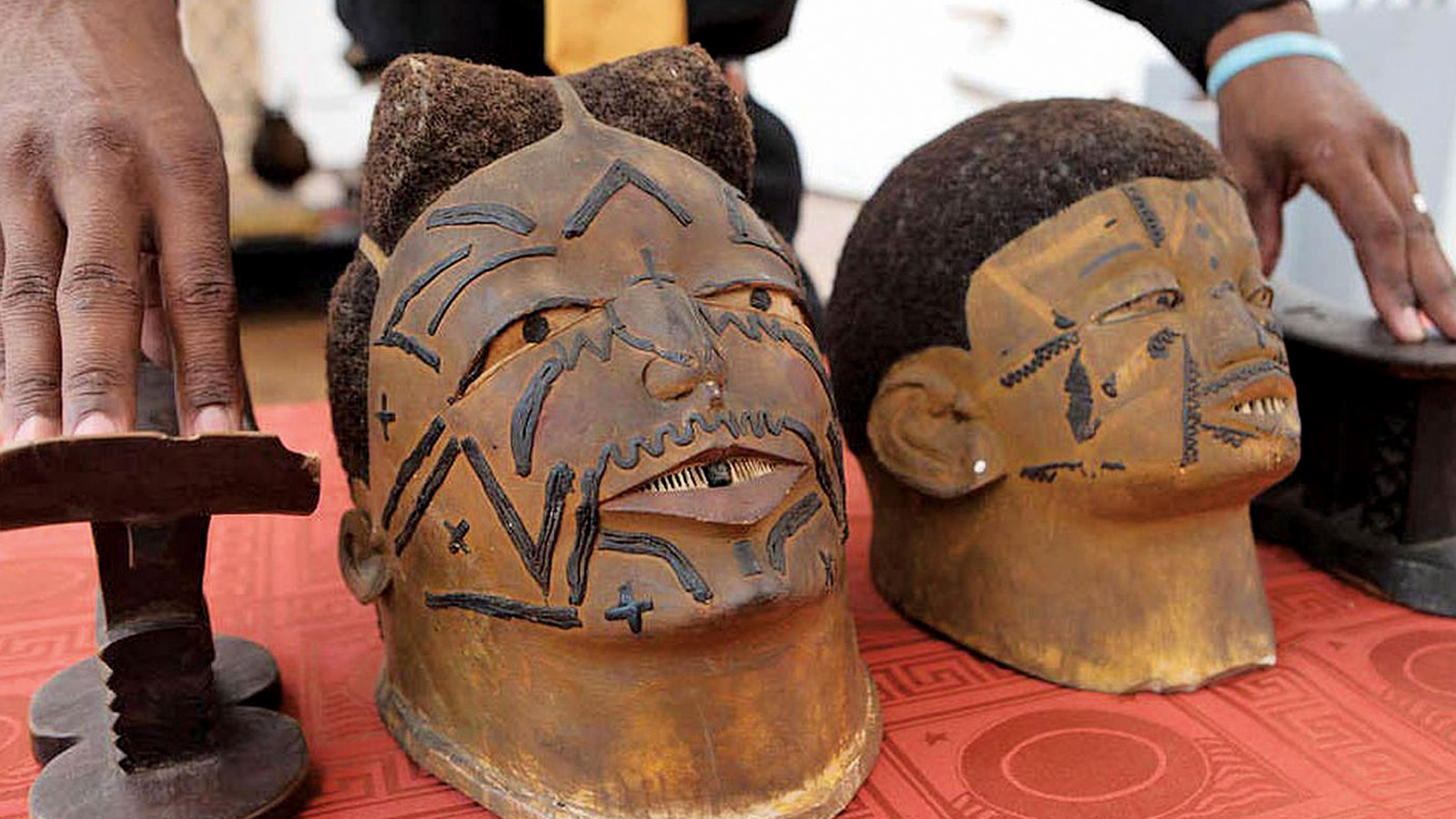
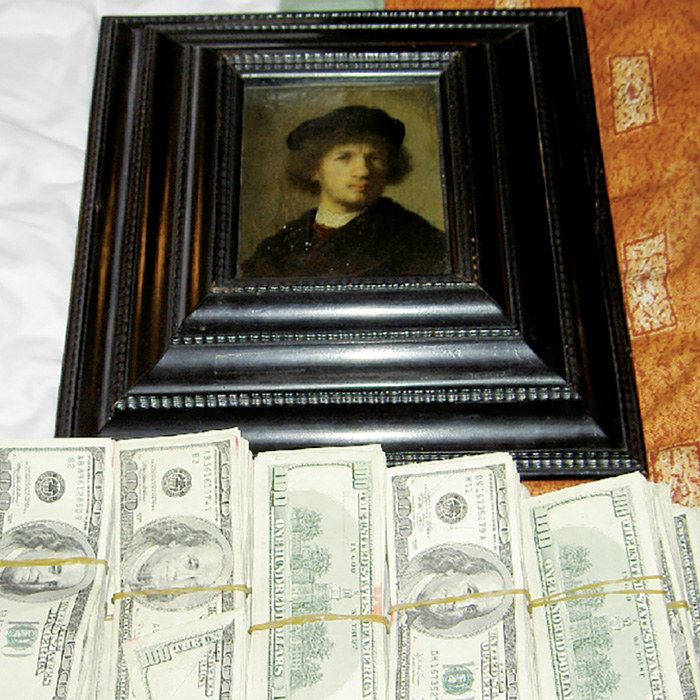
(1) African masks Bob Wittman helped recover in Poland. (2) The Rembrandt he was instrumental in returning to a museum in Sweden.
Also taken in the same incident was a 54-pound crystal ball that was once owned by the Dowager Empress of China. It too was in that mudroom, and the man who found it gave it to a woman he fancied who was a witch. The agents drove to her house in Trenton, New Jersey, and knocked on the door. She let them in and led them upstairs where, on the dresser in her bedroom, sat the crystal ball.
“It’s got a baseball cap on it. This is a $350,000 artifact, the second largest crystal ball in the world,” Wittman says. “She said that when the sun hit it, it would magnify the rays and start fires. She had no idea what it was.”
That case was never solved, but Wittman has a strong suspicion it was carried out by kids playing a prank.
“There was a George Washington portrait by [Charles Willson] Peale that was stolen at Lafayette College [in 2012], and basically it was part of a scavenger hunt,” he says. “They found it in the bushes a week later.”
When these things are gone, you'll never get them back. And they mean a lot to all of us. It's not just a rich guy crime. It's everybody's crime.
Bob Wittman
Not much art hangs on the walls of Wittman’s condo in the Penn’s Landing section of Philadelphia. Donna is a minimalist, he says, and what art he does have is displayed at their house about 45 minutes away. His collection includes two Native American bowls he purchased in Santa Fe, a couple of Salvador Dali sketches and some Civil War muskets. He was inspired to buy them all after working cases involving similar pieces.
While Wittman always appreciated art, he didn’t come to fully understand it until the FBI sent him to school. He studied art history at the Barnes Foundation in Philadelphia, diamonds at the Gemological Institute of America in Santa Monica, California and jewelry with experts at Zales in Dallas. In 2004, Wittman put together a team of eight agents and started the FBI’s art crime team.
Doug Miller became site director of William Penn’s Country Estate, Pennsbury Manor, while Wittman and his team were investigating the theft of items from the historical house including a pewter charger cast in London in 1671. Wittman helped the estate recover the items, and Miller and he became friends, speaking to museum associations around the country about theft prevention and recovery.
“While we hold the deed to these items, we hold the deed for the good of the public, not for personal use,” Miller says. “You're ultimately stealing from the public when you steal from a museum. We had a special tour come through with people from a rehab center. Since Bob did that approaching 30 years ago, you're looking at conservatively half a million people who have gotten to enjoy that piece of history that we wouldn't have had had he not been able to recover it.”
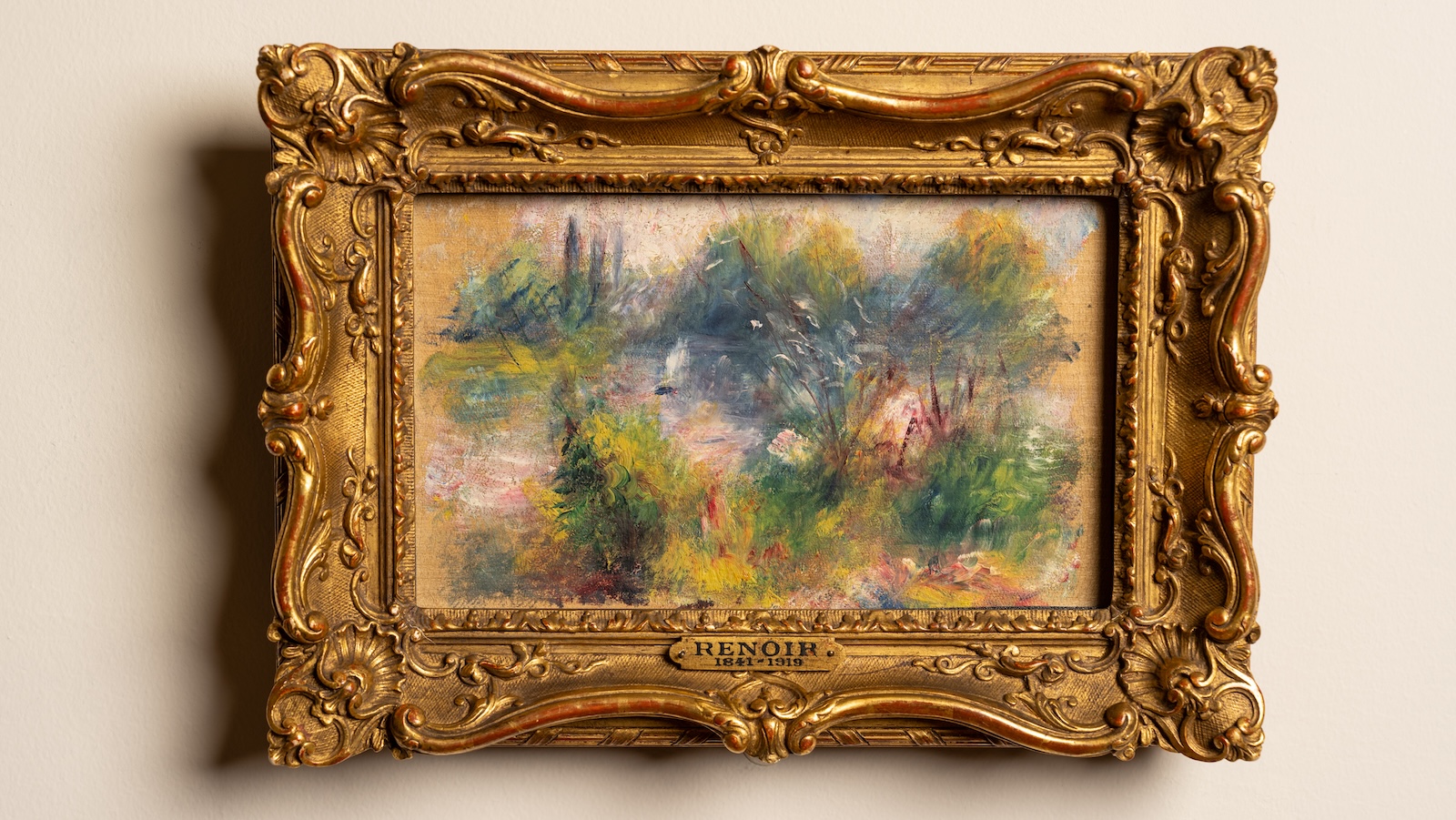
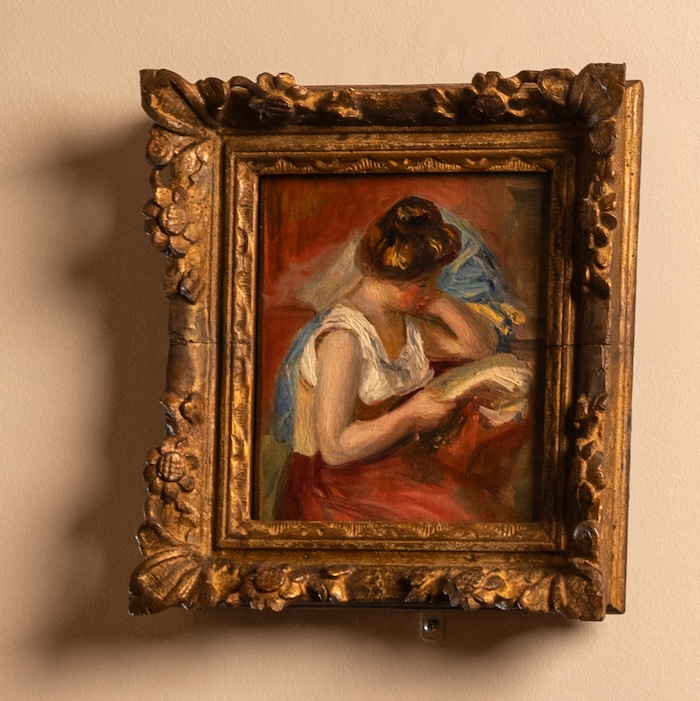
These paintings by Renoir hang in the Baltimore Museum of Art. Wittman helped recover the one on the left.
In 2000, three men with machine guns stormed into the Nationalmuseum in Stockholm, Sweden, and made off with Pierre-August Renoir’s “Young Parisian” and “Conversation” and Rembrandt van Rijn’s “Self Portrait.” The three works were worth an estimated $42 million. When Wittman got a call from an FBI colleague in Los Angeles who said he thought he knew the Renoir’s location, he knew he had to get involved.
“He said, ‘This drug squad has been working on this guy from Bulgaria named Boris,’” Wittman recalls. “They did surveillance and heard him talking about moving the Renoir. He took it out of a coin shop on Wilshire Boulevard where he had it hidden in the safe. When he comes out, they arrest him.”
Turns out Boris also knew the whereabouts of the Rembrant, which led Wittman to Copenhagen, Denmark, where he posed as an authenticator for the Russian mob in an undercover operation. For months he cultivated a relationship with the thieves, eventually agreeing to pay them $250,000 for the painting. The deal went down in a hotel room, the art was repossessed and the perpetrators arrested.
Wittman was in Warsaw, Poland, in 2008 on an undercover mission to recover masks stolen from a museum in Harare, Zimbabwe, when he felt something disturbing in the pit of his stomach. Actually, it was what he wasn’t experiencing that concerned him.
There were no butterflies.
“I was in a cab around 11:30 at night, and I was not nervous,” he says. “I was bored. You’ve got to have that edge, otherwise, bad things happen. And I thought, ‘This is it. I'm done.’”
After leaving the FBI, Wittman started his own consulting firm that provides protection and recovery services
to more than 100 public and private collections worldwide. Art is a gargantuan business:
worldwide art and antiques sales reached an estimated $67.8 billion in 2022, according
to a report in the New York Times.
The idea for the memoir (written with 2009 Pulitzer Prize Finalist John Shiffman)
came about in part because Wittman wanted to make sure the issue of art theft stayed
in the public light.
It’s always better to be lucky than smart. And I’m definitely lucky.
Bob Wittman
“I had some cases where the cultural property was destroyed, and that's just terrible,”
he says. “When these things are gone, you'll never get them back. And they mean a
lot to all of us. It's not just a rich guy crime. It's everybody's crime.”
Wittman is still infatuated with what he calls the “complexity” of art. But when he
visits art museums these days, he takes them in unlike most others.
“I'm always very much interested in the security system,” he says. “I look more at
the cameras then I do the art itself.”
During a trip to the Baltimore Museum of Art in September, Wittman took particular note of one of collection’s Picassos. It conjured memories of the two works by the Spanish master that he helped to recover in Paris all those years ago. In the aftermath of that case, the informant and “bad guy” who unwittingly played a part in the recovery got very, very angry. Word was that from prison, they had put a bounty on Wittman’s life.
At the bar in the Diplomat Hotel in Miami, Wittman met with two hitmen. Although he never carried a gun during his undercover art stings, on that day he packed one in each pocket. Thankfully, he convinced the would-be killers to stand down without having to employ them.
“It’s been fun,” Wittman says in his typical easygoing style of the wild ride that is his life. “It’s always better to be lucky than smart. And I’m definitely lucky,” he says with a smile.

